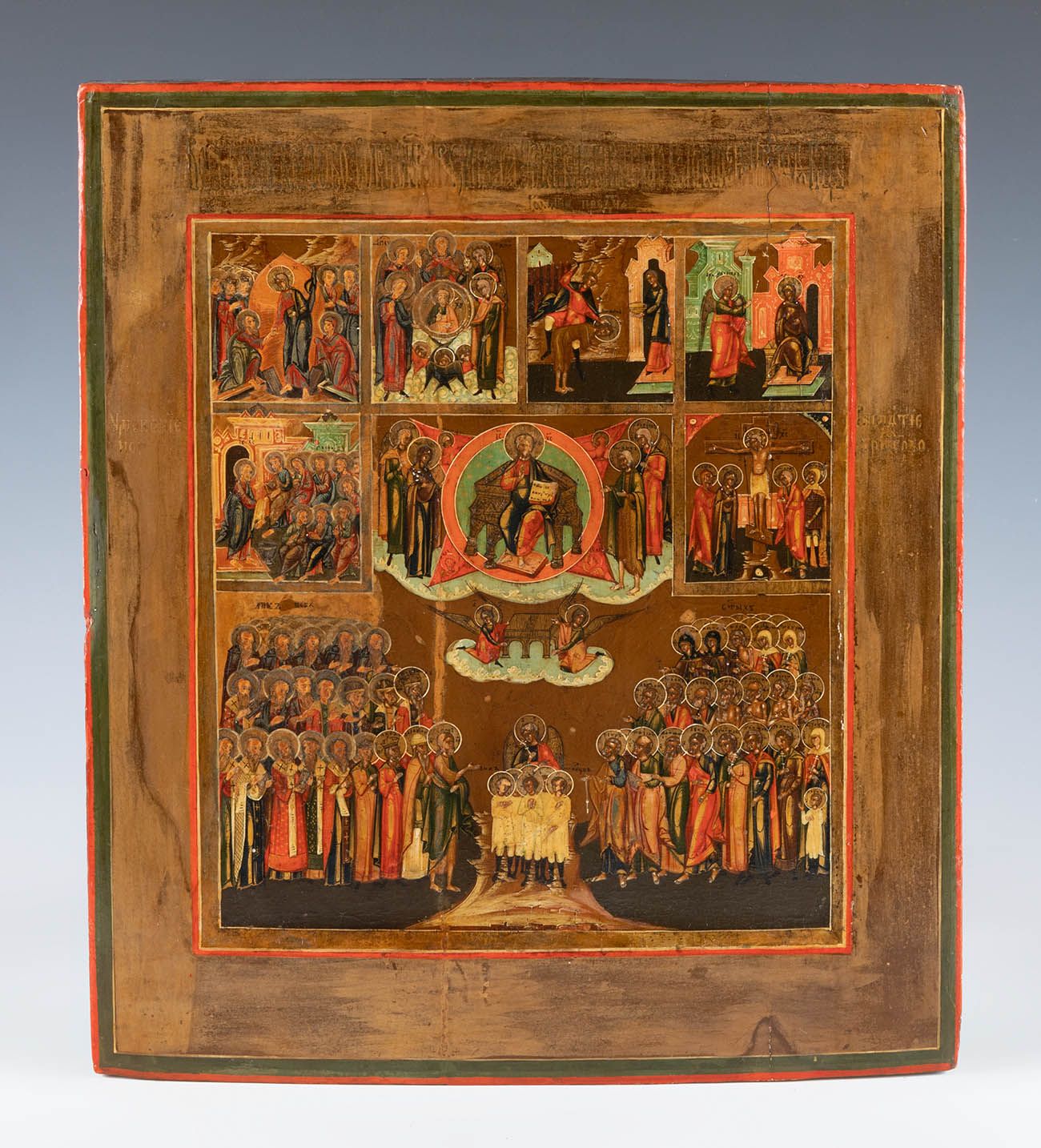Description
Russian school, 18th century. "Resurrection of Christ. Tempera, gold on panel. Measurements: 35 x 30 cm. The icon that concerns us, in spite of its relatively simple composition, with six scenes in its upper part that include the theme of the Passion of Christ and the Resurrection; a central space dedicated to the deesis and its lower half dedicated to the representation of the Evangelists, is very attractive because of the symbolism of the symbolic details that accompanies each one of the miniatures. Each of the upper cells depicts scenes from the life of Christ in great detail. The Washing of the Feet, the Crucifixion, the Apparition of the Angel to the Virgin and Christ's Ascension to Heaven are some of the images that the anonymous artist immortalised on the panel. The principal scene, which covers the entire lower half and part of the central register, depicts the "Spas" or Pantocrator, the Saviour, a scene that can be seen in every Orthodox church. It shows Christ blessing with his right hand and holding the Gospel in his left, which may be closed or open, as here. At his sides are the Virgin and Saint John the Baptist, an iconography which, as a whole, is known as the Deesis. The lower half of the icon depicts the most important saints, with St Peter and St Paul. The visual characteristics of the icon help to deduce its chronological period, dating it to the 18th century. The gold leaf background, the stylised drawing outlining each figure, the intense chromaticism and the special attention to detail of the figures are elements that remain faithful to the tradition of Orthodox icons.
21
Russian school, 18th century. "Resurrection of Christ. Tempera, gold on panel. Measurements: 35 x 30 cm. The icon that concerns us, in spite of its relatively simple composition, with six scenes in its upper part that include the theme of the Passion of Christ and the Resurrection; a central space dedicated to the deesis and its lower half dedicated to the representation of the Evangelists, is very attractive because of the symbolism of the symbolic details that accompanies each one of the miniatures. Each of the upper cells depicts scenes from the life of Christ in great detail. The Washing of the Feet, the Crucifixion, the Apparition of the Angel to the Virgin and Christ's Ascension to Heaven are some of the images that the anonymous artist immortalised on the panel. The principal scene, which covers the entire lower half and part of the central register, depicts the "Spas" or Pantocrator, the Saviour, a scene that can be seen in every Orthodox church. It shows Christ blessing with his right hand and holding the Gospel in his left, which may be closed or open, as here. At his sides are the Virgin and Saint John the Baptist, an iconography which, as a whole, is known as the Deesis. The lower half of the icon depicts the most important saints, with St Peter and St Paul. The visual characteristics of the icon help to deduce its chronological period, dating it to the 18th century. The gold leaf background, the stylised drawing outlining each figure, the intense chromaticism and the special attention to detail of the figures are elements that remain faithful to the tradition of Orthodox icons.
